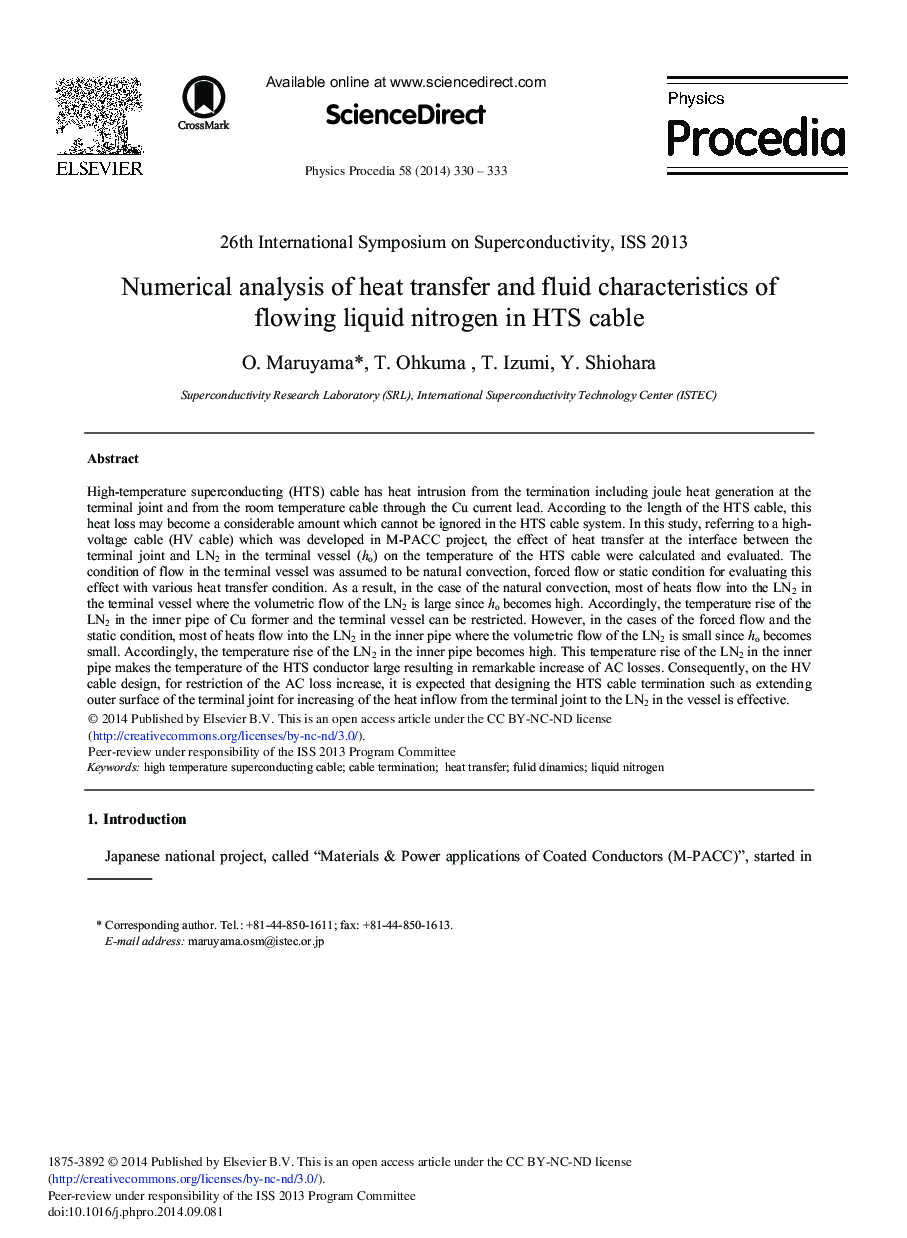| کد مقاله | کد نشریه | سال انتشار | مقاله انگلیسی | نسخه تمام متن |
|---|---|---|---|---|
| 1874616 | 1530966 | 2014 | 4 صفحه PDF | دانلود رایگان |

High-temperature superconducting (HTS) cable has heat intrusion from the termination including joule heat generation at the terminal joint and from the room temperature cable through the Cu current lead. According to the length of the HTS cable, this heat loss may become a considerable amount which cannot be ignored in the HTS cable system. In this study, referring to a high-voltage cable (HV cable) which was developed in M-PACC project, the effect of heat transfer at the interface between the terminal joint and LN2 in the terminal vessel (ho) on the temperature of the HTS cable were calculated and evaluated. The condition of flow in the terminal vessel was assumed to be natural convection, forced flow or static condition for evaluating this effect with various heat transfer condition. As a result, in the case of the natural convection, most of heats flow into the LN2 in the terminal vessel where the volumetric flow of the LN2 is large since ho becomes high. Accordingly, the temperature rise of the LN2 in the inner pipe of Cu former and the terminal vessel can be restricted. However, in the cases of the forced flow and the static condition, most of heats flow into the LN2 in the inner pipe where the volumetric flow of the LN2 is small since ho becomes small. Accordingly, the temperature rise of the LN2 in the inner pipe becomes high. This temperature rise of the LN2 in the inner pipe makes the temperature of the HTS conductor large resulting in remarkable increase of AC losses. Consequently, on the HV cable design, for restriction of the AC loss increase, it is expected that designing the HTS cable termination such as extending outer surface of the terminal joint for increasing of the heat inflow from the terminal joint to the LN2 in the vessel is effective.
Journal: Physics Procedia - Volume 58, 2014, Pages 330-333